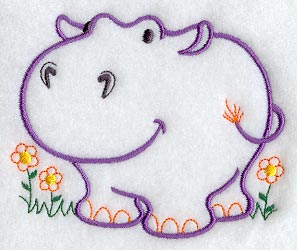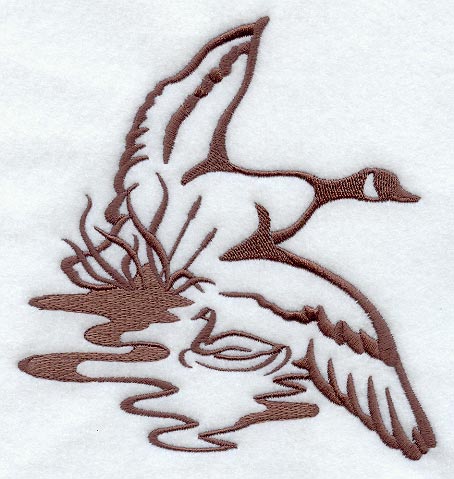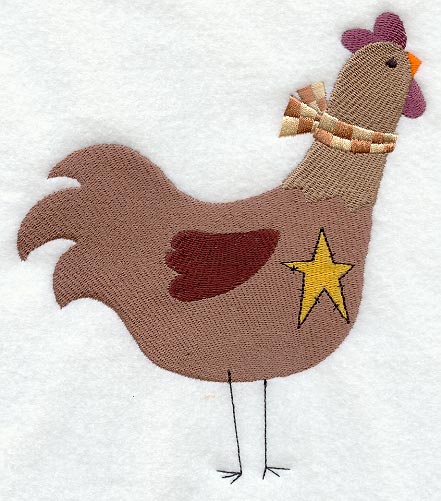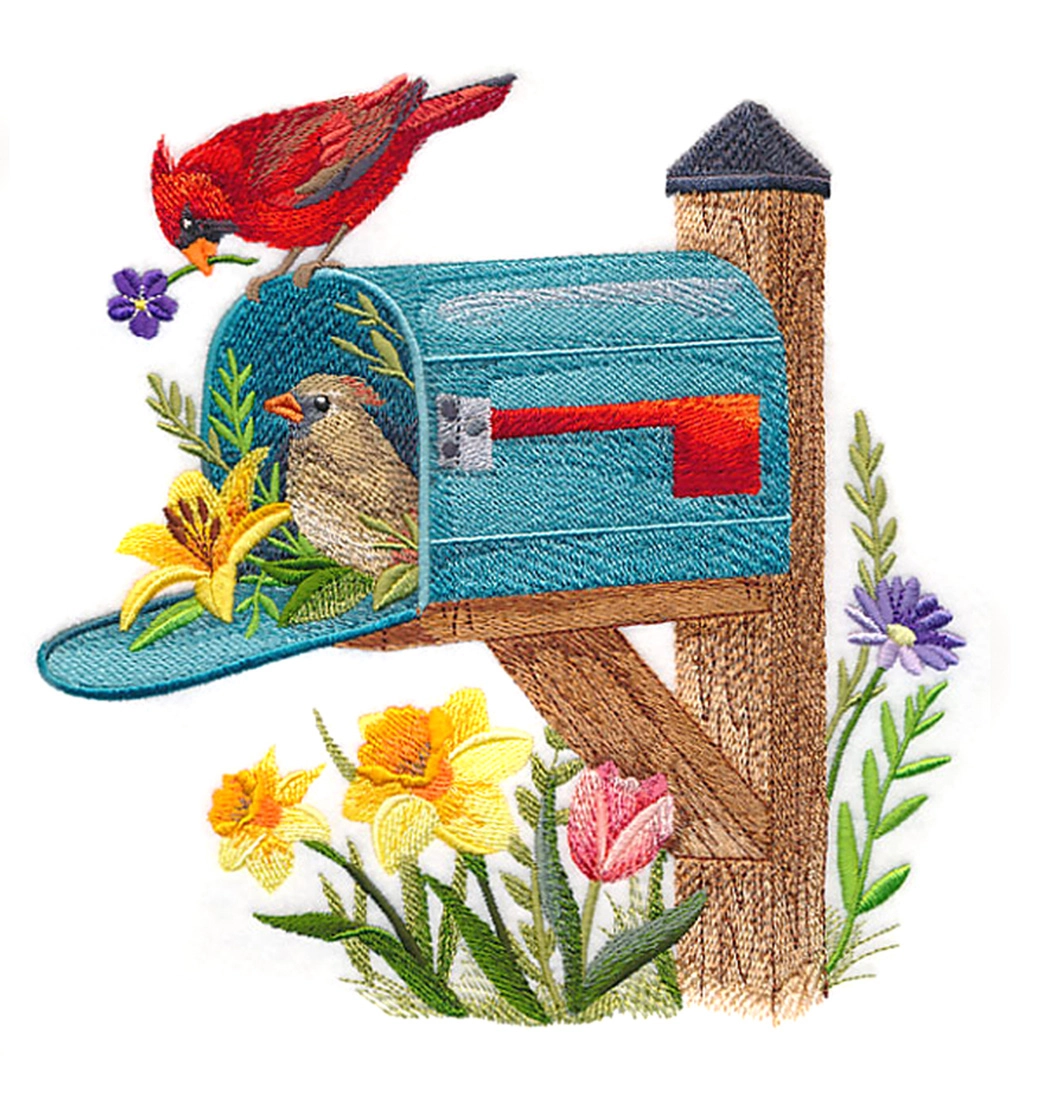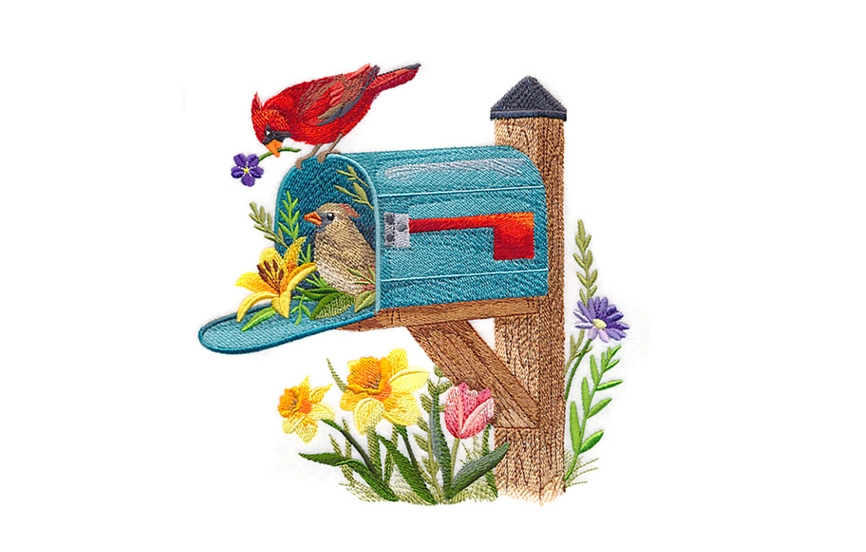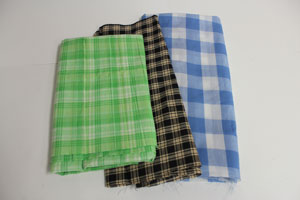
Homespun is a versatile fabric primarily made of cotton, or a cotton-polyester blend. The weight and texture of homespun is similar to broadcloth and quilter's cotton, but slightly sturdier.
Homespun is used in a wide variety of projects, such as quilts, table linens, kitchen linens, curtains - even pillow covers. Read on for tips and tricks for getting great results when stitching on homespun!
Homespun can be found many places, in stores and online. I bought my fabric at JoAnn.com and at Fabric.com.
Before embroidering on homespun, pre-wash the fabric. Since it is usually 100% cotton or a cotton blend, it's going to shrink at least a bit. Machine wash in cold water, tumble dry on low, and press with a warm iron if necessary. If there are specific manufacturer's recommendations with the fabric, follow those.
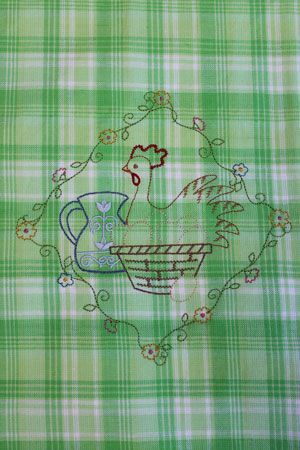
Stabilizer
For a lightweight fabric, homespun is actually quite a solid foundation for embroidery. The type of stabilizer that will give the best results depends on the weight of the material, and design choice.
A cotton/poly blend of homespun may be more see-through than a 100% cotton fabric. If it's important not to see any stabilizer behind the fabric, tear-away stabilizer may be the way to go.
For more densely woven homespun, a medium weight (2.5 ounce) cutaway stabilizer will give the best results. And, the additional strength of cutaway allows for the use of more solid-filled designs.
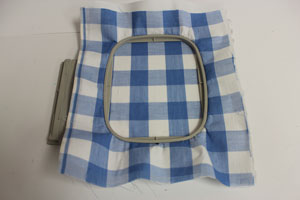
Hooping
Lightweight homespun is a snap to hoop. To prepare the fabric for embroidery, I cut a piece of cutaway stabilizer a bit larger than the hoop. Then I sprayed the stabilizer with a bit of adhesive (I use KK100), and smoothed the fabric on top of the stabilizer.
Many homespun fabrics have a check or plaid pattern, and I found that it's possible to stretch out the checks or plaid when smoothing the fabric onto the stabilizer. Be aware that this can happen, and just adjust the fabric if necessary to keep the checks straight.
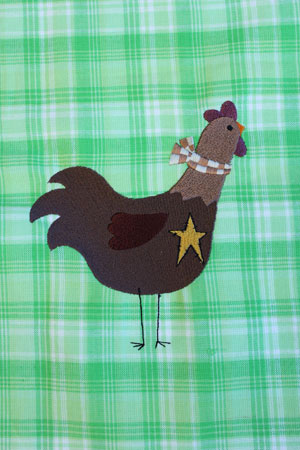
Design choice
Design choice when stitching on homespun will depend on the fabric blend, as well as the pattern and color of the fabric.
In my experiments, I found that 100% cotton homespun supported more solid-fill designs as beautifully as it did lighter, more open designs. The key to embroidering more complex designs onto homespun is, as always, to use a cutaway stabilizer behind them.
The Country Hen with Star (left) looks terrific on this 100% cotton green gingham check -- with a cutaway stabilizer.
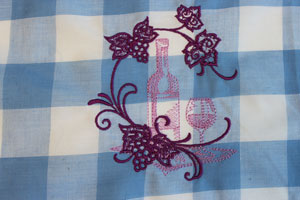
Light and open designs are best for the more lightweight cotton/poly blends. The photo on the left shows the Grapes and Wine Echo on a 35% cotton/65% polyester blend homespun, with a tear-away stabilizer. It looks fantastic! And, there is no stabilizer visible through the fabric.
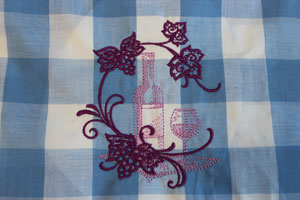
On the left the Grapes and Wine Echo is stitched with a cutaway stabilizer. If you don't mind the stabilizer showing slightly, backing embroidery with cutaway is the way to go for long-lasting professional results, through years of use and laundering!
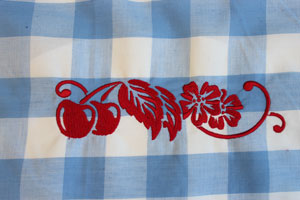
Slightly more filled designs look great on the lighter cotton/poly fabric, too. I stitched the Simply Cherries Border using cutaway stabilizer, and the look is fresh and lovely.
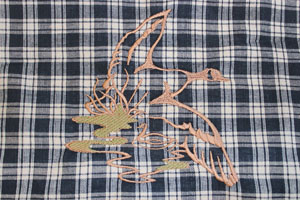
Choosing designs for plaid fabric
Since so much homespun is patterned with checks and plaid, it's important to ask when choosing designs, "How will this design stand out against the fabric colors and pattern?"
The rule of thumb for choosing designs to go on a "busy" fabric is to choose simpler designs that can clearly be seen on the pattern. Also, be sure to choose colors that will show up well against the fabric.
I embroidered the Canada Goose Silhouette Scene onto a natural/black plaid homespun in colors that would give a tone-on-tone effect. The key to a good tone-on-tone effect is to choose a thread color that is slightly lighter, brighter, or darker than the fabric.

The Happy Hippo looks terrific on this green plaid homespun. Choosing simple designs with contrasting colors will make the embroidery designs stand out against the fabric pattern.
